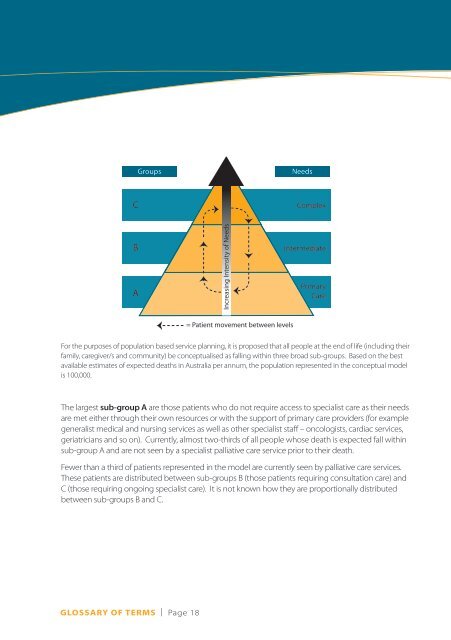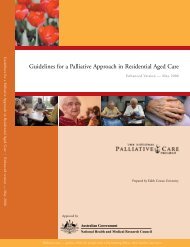PALLIATIVE And End OF LIFE CARE GLOSSARY OF TERMS ...
PALLIATIVE And End OF LIFE CARE GLOSSARY OF TERMS ...
PALLIATIVE And End OF LIFE CARE GLOSSARY OF TERMS ...
You also want an ePaper? Increase the reach of your titles
YUMPU automatically turns print PDFs into web optimized ePapers that Google loves.
For the purposes of population based service planning, it is proposed that all people at the end of life (including their<br />
family, caregiver/s and community) be conceptualised as falling within three broad sub-groups. Based on the best<br />
available estimates of expected deaths in Australia per annum, the population represented in the conceptual model<br />
is 100,000.<br />
The largest sub-group A are those patients who do not require access to specialist care as their needs<br />
are met either through their own resources or with the support of primary care providers (for example<br />
generalist medical and nursing services as well as other specialist staff – oncologists, cardiac services,<br />
geriatricians and so on). Currently, almost two-thirds of all people whose death is expected fall within<br />
sub-group A and are not seen by a specialist palliative care service prior to their death.<br />
Fewer than a third of patients represented in the model are currently seen by palliative care services.<br />
These patients are distributed between sub-groups B (those patients requiring consultation care) and<br />
C (those requiring ongoing specialist care). It is not known how they are proportionally distributed<br />
between sub-groups B and C.<br />
Glossary of terms | Page 18
















